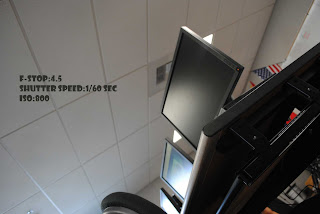Thursday, September 29, 2011
Friday, September 23, 2011
Robert Glenn Ketchum biography
Robert Glenn Ketchum was born on December 1st, 1947. He studied design at UCLA and began his study in photography under the direction of Edmund Teske and Robert Heinecken. Ketchum and his close friend master printer Michael Wilder pioneered Cibachrome color printmaking in the early 1970's. They were also among the first contemporary photographers to explore print scale. After he graduated he began a life-long friendship with Eliot Porter, who helped his ideas of photography. His first published photos were of 60’s rock bands. Ketchum said, “And when I graduated in 1970 from UCLA, a lot of those heroes of rock ’n roll, who I had admired and photographed, had killed themselves so I thought it was a good idea to get myself out of that and go somewhere else. I went up to central Idaho, where I had previously hunted and fished with my dad, figuring that I would go to work as a professional photographer.” He became a landscape/nature photographer and a big environmentalist. His most well known project was the Tongass Rain Forest Project, which began in 1985. This opportunity sent him to Alaska to take pictures to enhance the “Timber Reform Bill.” Ketchum remembers, “I read the 600+ pages of the Bill and thought ‘Oh, my Gosh! If this is what everyone has to read, no one will even read the Bill, let alone pass it.” Ketchum’s work in the Tongass is credited with helping to pass the Tongass Timber Reform Bill of 1990. This bill established five major wilderness areas and protected more than 1 million acres of trees in the world’s largest rain forest. Audubon magazine included Ketchum in their list of 100 people "who shaped the environmental movement in the 20th century. He was also listed by American Photo magazine as one of the 100 most important people in photography as well as being named the 2001 Outstanding Photographer of the Year by the North American Nature Photography Association. Ketchum's photographs are in numerous collections including the Museum of Modern Art (New York City), the National Museum of American Art, (Washington, D.C.), the Museum of Contemporary Art, Los Angeles, and the Metropolitan Museum of Art (New York City).
Bibliography
Thursday, September 22, 2011
Tuesday, September 20, 2011
Monday, September 19, 2011
Reflection
Photography literally means “light drawing”. It is where you create a picture by recording radiation on a sensitive material. The basic camera shots are extremely wide shot and very wide shot which are far away. Wide shot is closer up and you can see the whole subject. Mid shot and medium close up and you can’t see the bottom of the subject. A close up takes up the whole frame and extreme close up gets really close and shows a lot of detail. Rule of thirds is where there are nine squares and the focal point is one of the lines the square makes up. Shutter speed is how long the shutter stays open and can create a motion blur effect (which lets you do light graffiti) or a freeze frame effect so you can freeze something in mid-air. To get a freeze frame you should set the shutter speed to 1/100 of a second or lower. If you want motion blur it should be higher, like 1/20 of a second or higher. ISO stands for international standard organization is how sensitive the camera is to light. ISO can give your photo a grainy effect or let you take better photographs at night.
Thursday, September 15, 2011
Wednesday, September 14, 2011
Tuesday, September 13, 2011
Thursday, September 8, 2011
Wednesday, September 7, 2011
Tuesday, September 6, 2011
Subscribe to:
Comments (Atom)


















































